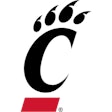
When Washington State University quarterback Tyler Hilinski took his own life in January 2018 at age 21, an entire sports nation took notice. Student-athlete mental health was suddenly foremost on the minds of athletics administrators everywhere. In Corvallis, Ore., the Oregon State University community was all too familiar with such tragedy, having just endured two student-athlete suicides inside a year. It was while struggling to enter the memorial service for her former OSU gymnastics teammate that Taylor Ricci realized she could do more to cope personally while helping others in the process. Ricci promptly cofounded the non-profit Dam Worth It with soccer player Nathan Braaten, who had lost a Beavers teammate to suicide 11 months earlier, with the goal of addressing the stigma surrounding student-athletes who seek mental-health support. AB senior editor Paul Steinbach spoke to Ricci, now a medical student at the University of British Columbia in her native Canada, just days after her appearance at the Pac-12 Student-Athlete Health and Wellbeing Initiative's annual conference in late May.
How exactly did Dam Worth It come to be?
Dam Worth It was started almost four years ago now. Back in 2016, Nathan Braaten, who's a former men's soccer player at Oregon State, lost a teammate to suicide while playing at Oregon State. And less than 12 months later, I lost a teammate, as well, to suicide while at Oregon State. So really, in the span of one year, Oregon State lost two student-athletes to suicide. Nathan and I were both team captains at Oregon State. We were both leaders on our campus, involved in numerous extracurriculars and were really seen as leaders, and all of a sudden we were faced with what it felt like to lose a teammate to suicide. For me, I like to say Dam Worth It started in a parking lot in Dallas, Texas, where I was standing outside my teammate's celebration of life and I couldn't go inside the doors. My coach came out, and I pretty much said three things to him: I should have done more, I could have done more, and how am I going to get past this? And he essentially looked at me that day and said, "Okay, you're going to be the person who gets through this by doing something about this, and by using your platform as an athlete, using your voice, to make sure another team at Oregon State doesn't have to go through what we've gone through." That was August of 2017, and three months later, Nathan and I connected and sat down at a coffee shop in Oregon, and we essentially said, "What can we do?" And we realized, as students, we didn't have the power to bring on 10 new sports psychologists, we didn't have the power to influence the resource side of things as it came to mental health at Oregon State, but we had the power to try and end the stigma. So, Nathan and I put pen to paper one day at a coffee shop and spent four or five hours drafting what is now Dam Worth It and presented it to our athletic department that next day. And that's where Dam Worth It was born.
Did you know Nathan before that day?
The student-athlete world at Oregon State and at most campuses is pretty small, so he and I knew of each other. We maybe had a couple of conversations. But it really was kind of one of those things where we both knew that we were leaders on our teams, and we both knew that we had gone through something similar. Going out for that first cup of coffee was the first time we really connected and became friends.
Do you think Nathan was mulling what he might do at the time you were, or did you bring him onboard to where you were headed?
With Nathan, he had an extra year on top of me. In fall 2017, it was more than a year from when he lost his teammate, and it was only a matter of a couple months for me. I like to think Nathan was thinking, "What can I do?" But it really it came from us having a conversation. That first conversation that we had, it wasn't necessarily, "Okay, let's start Dam Worth It." It was more along the lines of me saying to him, "How are you getting through this? Because I'm still trying to figure it out." And that conversation really led from us trying to cope with our emotions and what we had gone through to really trying to change into advocacy and action.
What kind of attention was being given to student-athlete mental health in 2017?
You know, I think mental health has been a thing for as long as humans have walked the earth, and student-athlete mental health has been something that has been prevalent for years. But on our campus, mental health was really prevalent after the loss of two student-athletes. Just to go back a little bit, in fall 2017, we launched to our student-athlete community, saying, "This is Dam Worth It. This is what we're going to do." But we publicly set a launch date for January of 2018, and that's when we were going to launch Dam Worth It to our full campus, our full community and the country. That launch date was set for months in advance, and 48 hours before that launch date was when Tyler Hilinski took his life.
Wow.
Yeah. So, I think that event is what really brought student-athlete mental health to the center of attention and really shined a light on, "Holy smokes! This is serious and this is real." Nathan and I and our athletic department had conversations when that happened, because for Nathan and I, it brought up all our emotions again, and it brought up all these feelings of what we had gone through after hearing the news of Tyler, and it came down to "Do we still launch this?" And, you know, our answer to that was there's no better time to launch this, because this is what we're trying to do. We're trying to end this stigma. We're trying to help student-athletes realize it's okay to not be okay. So, we launched 48 hours after that on our scheduled launch date, and there was so much attention on mental health in college athletics, and then here is Dam Worth It saying we've known that this has been a problem, that this is an issue that we need to do something about, and this is what we're doing about it.
Did you make any special overtures toward Washington State at that time, in the immediate aftermath?
At that first launch date, we did not, just out of respect for the family, because it was so soon. But that fall, less than a year later, it was our first-ever Dam Worth It football game, and we had that football game be Oregon State versus Washington State. We actually had [Tyler's mother] Kim Hilinski fly down and take part in our Dam Worth It game and really kind of honored that family at our first Dam Worth It football game.
Are Dam Worth It games something you do annually at Oregon State?
Dam Worth It has three pillars — awareness, resources and education — and the biggest portion of our awareness pillar is Dam Worth It games. Every year, every sports team has an annual Dam Worth It game, where the student-athletes are warming up in Dam Worth It T-shirts, where our Dam Worth It promo video is played on the Jumbotron, where we have our Dam Worth It student teams handing out wrist bands and signs saying "I'm Dam Worth It Because... " and other resources to students and fans. Those games have been going on for the last couple of years and every year we have every single sport do one of those.
You can't possibly be present at all of them.
No. Another unique piece of Dam Worth It, which I truly believe is the reason why it has seen the impact that it has, is that it's by students for students. While I was a student at Oregon State, I was leading Dam Worth It. I was at every single Dam Worth It game. But when I graduated, essentially what Nathan and I have done is we've recruited a team of students and student-athletes who run the show on Oregon State's campus, and we are essentially their mentors. I'm up in Canada, Nathan's in Colorado, but yet we have this team of 12 students at Oregon State who are hosting these events year after year.
The greater attention now being given to student-athlete mental health is undeniable, but do you think it's enough?
I think it's one of those things where there's no simple solution to this. There's no simple solution that if this school has this number of sports psychologists and this number of counselors for student-athletes it's going to solve this. Essentially what we're trying to do is change a culture right now to one that not only promotes going to see mental-health professionals and seek mental-health support, but also truly believes in breaking down that stigma. I think this process has been slow, but when you're trying to change a culture, of course it's going to be slow. Nathan and I were awarded a grant from the Pac-12 a couple years ago that we actually just presented on this past weekend at an annual conference, where essentially we went to every single Pac-12 school, we surveyed the student-athletes, we surveyed the athletic department staff and faculty, and we assessed the climate of mental health on their campus. Frankly, we just asked them the question, "Do you think there need to be more mental-health resources?" And we had more than 80 percent of student-athletes and faculty say, "Yes, we want more." So, I think that's kind of the answer right there. Even if a school is doing a lot, student-athletes and faculty want more.
The survivors of suicide cases often suffer through their own second-guessing. You mentioned that you could have done more in the case of your gymnastics teammate. Were there signs that you recognized in hindsight?
I think you kind of already alluded to it. Suicide leaves you thinking of every single interaction you had with the person — every single conversation that you had and every single conversation that you have not had. And with my particular teammate, she was one that I recognized was struggling. I think our whole team recognized that she was struggling. But it came down to the fact I was 21 years old, and I was an elite athlete. We were competing at nationals. I was taking a bunch of courses. I was in final exams. In the months leading up it, I had so many conversations in my head saying, "Okay, when national championships are over, our season's done, then I'm going to make sure she's okay." Or, "When my final exams are done and I've taken my MCAT exam for medical school, then I'll check in and say, 'Are you doing okay?' " For me, those words came from conversations that weren't had. Something that I say to everyone when they ask, "What's your advice? What can we do?" I simply say, "How are you?" Those are three words that — if I look back in time — I wish I would have said to her. I know that when it comes to suicide there's a lot of mental illness that plays into that, so a lot of the times even if we do have the conversations, that might still not be enough. For me, I saw that she was struggling, and I wish I could have done more to make sure that she was okay.
What signs did you see?
I think it's a bigger thing that we see in all athletes. She was a teammate who — halfway through her freshman year — stepped away from the team. She was still at Oregon State, but she stepped away from the team halfway through because the rigors of college athletics were tough. You enter into college athletics, and what the fans see is fun, exciting. "These athletes are our superheroes." But in the background, it's training 20 hours a week, it's battling injuries, it's trying to manage the stress of school and sport, and it's a lot. I think, for her, the loss of athletic identity, the loss of purpose — those were prevalent. And disassociating with teammates. At first, she was still super involved, and we would still have conversations with her and be going to other sporting events with her. But she slowly started to become disengaged and slowly started to withdraw to the point you just kind of know. You just kind of see that she's smiling when I say hi to her, but there's a lot more that's behind that smile.
And she never returned to the team?
No. It was halfway through her freshman year, she stepped down, and then it would have been the end of her freshman year that she took her life.
You mentioned the pressures that you've experienced. Have you personally ever reached a point where you considered quitting gymnastics or worse?
Losing my teammate was kind of the second hit on my mental-health journey. My first hit happened my senior year, kind of that year leading up to her suicide. I was diagnosed with an autoimmune disease that essentially caused me to lose about 50 percent of the hair on my head. And it was a very traumatizing thing, to be very honest, as a 21-year-old female in the sport of gymnastics, where you're literally defined on beauty. It was really a tough thing for me, and it was something that I hid a lot. I wore a lot of hats. I tried to do my hair in certain ways to where fans and people couldn't see what was really there. And that's kind of where the stress and anxiety of outside life, outside of sport, was definitely impacting my performance, impacting my career as an athlete. Instead of saluting the judge and thinking of my routine, I was thinking, "Oh, my gosh. Are these 10,000 people noticing that I'm bald?" So that was a really tough piece, but it was something that after going through treatment and hair started to grow back, it kind of was something that was buried. "Okay, I've gotten past this. I'm okay." But then, you know, after losing my teammate, it was almost like the mental-health struggles that I had pushed down came back to the surface. I can say that I've never considered suicide. I've never gotten to that point, but I for sure have experienced depression. I for sure have experienced anxiety. I did seek out support from a mental-health professional for months after losing my teammate.
But you hadn't sought help while you were going through your own health issues.
Nope. I was an athlete. I was a full-ride scholarship athlete. I was a team captain. I was a 4.0 student. Who was I to be struggling and seeking mental-health support? I had all this amazing stuff going on in my life. That was kind of what was going through my head when I was going through that. Who am I to struggle? There was that stigma that was there for me that prevented me from seeking support.
In hindsight, do you think you would have benefited had you just gotten over that and sought help?
One-thousand percent. One-thousand percent. Yeah. I think that a huge lesson learned for me was that you don't need to be diagnosed with a mental-health illness to seek mental-health support, and that's something I really wish I would have known. Even the first couple months when I did go to see a therapist, we had these backpacks that said "Oregon State Gymnastics" on them, and I used to leave that backpack in my car or at my house because I didn't want to walk into the counselor's office and have people see it and say, "Oh, my gosh. What is this athlete doing here? This athlete has everything. She has all this support, all these resources. Why does she need mental-health support?" You know, it took me a couple months to get over even just walking in with my backpack on. So, definitely things in hindsight that I totally would have done differently, which is why Dam Worth It is such a passion project for me, because if we can get through to students and get through to athletes earlier, we're hoping that it can make a difference.
How much reach outside of Corvallis does Dam Worth It currently have?
Once Nathan and I graduated from Oregon State, it took about a year to go through all the legal process, but we essentially incorporated Dam Worth It to be not just an initiative at Oregon State, but to be a 501c3 nonprofit. We launched the 501c3 on the exact three-year anniversary of when we launched Dam Worth It at Oregon State, so it's only been a nonprofit for about five months now. And we've expanded it, so we're not just doing universities. We're doing high schools, as well. Right now, we have two high schools in the state of Oregon that are kind of our initial launch projects as Dam Worth It branches. Starting in July, we're essentially going to be onboarding a Dam Worth It class of 2021-22. We're looking to launch, with the start of the academic year in September, approximately five to 10 university branches across the states.
When you talk about expansion, are you still focusing on athletes or is it broader than that?
It's broader than that. Our mission of Dam Worth It is to utilize the platform of sport, but that doesn't mean just targeting athletes. For example, at Oregon State we have a team of 12 students — six of whom are students, six of whom are student-athletes. When we go into these schools, just because of our athletic connections, sometimes it's easier to start it within the athletic community, but it is our goal that these schools expand their Dam Worth It branch into both students and student-athletes. But honestly, either way, by hosting these Dam Worth It games and by hosting these Dam Worth It campus-wide events, we've seen at Oregon State that it is really powerful. Even if it is an initiative that's within the athletic department, it impacts the entire campus. It impacts students, as well.
Finally, how do you see your future involvement? Will you always have this tether to Dam Worth It, or do you see it taking on a life of its own in which you're simply referred to as its co-founder? Do you think that you'll be active in mental health the rest of your life?
Well, it's funny. I'm halfway through medical school, so I have to go two years before I become a physician. And Nathan currently works at the Nike world headquarters. So, while we both have these separate full-time jobs, it's kind of this perfect pairing of sport and medicine, and that really kind of encapsulates Dam Worth It. I definitely am going to become a physician, and I'm going to be a full-time physician, but Dam Worth It is something I will always, always have my hands on and always be a part of — being in a leadership and mentorship position, but bringing on a team that will help us, because we can't do it on our own. You know, it's been over three years since I lost my teammate, and it's not like you magically get better. It's something that I still process, and Dam Worth It constantly is that thing that heals me. I think, because of that, Dam Worth It is something that is a passion, but it's also a form of my therapy, as well. I hope that Dam Worth It becomes big. I hope that every campus across the country can have a Dam Worth It branch to experience the benefits that we've seen at Oregon State. That's the dream.
This article originally appeared in the July | August 2021 issue of Athletic Business with the title "Suicides spark former athlete’s focus on mental health." Athletic Business is a free magazine for professionals in the athletic, fitness and recreation industry. Click here to subscribe.





































